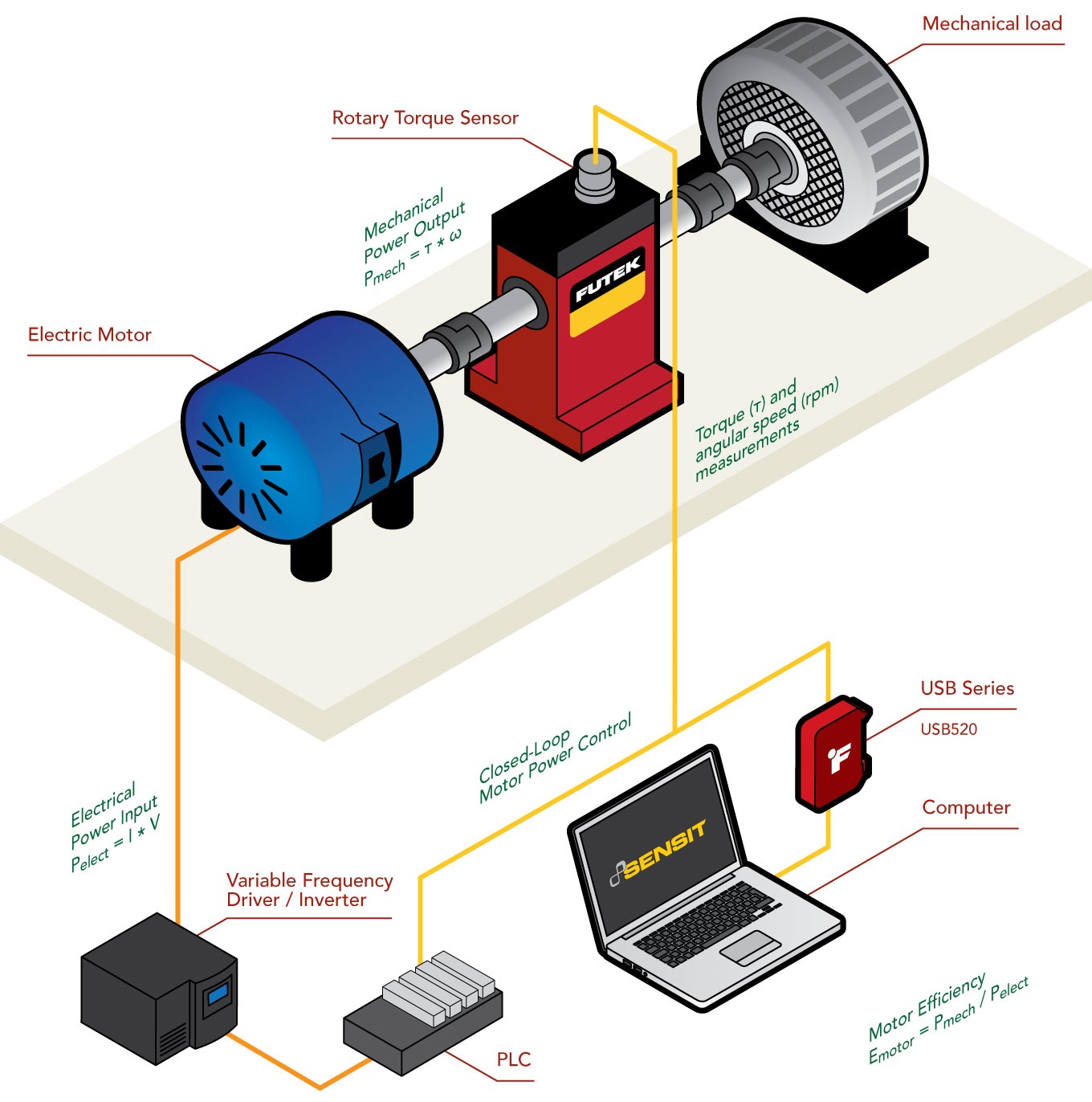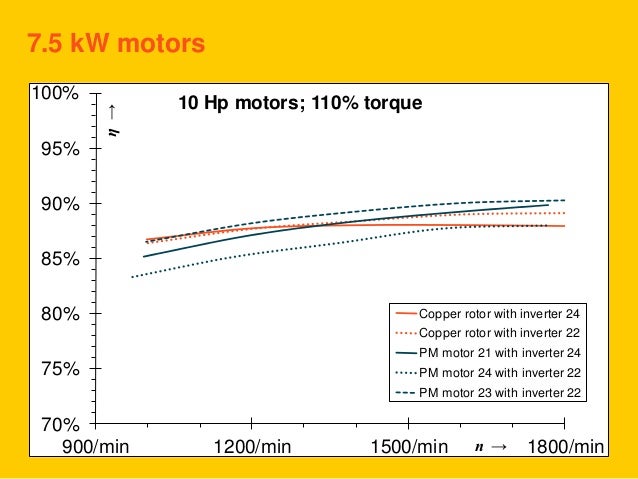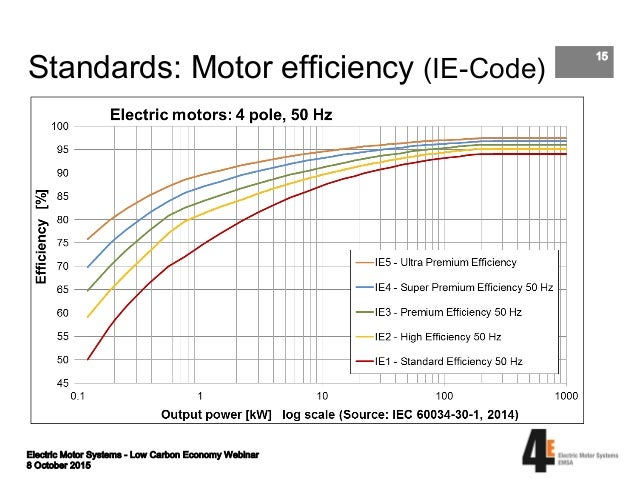Unlocking the Secrets of Electric Motor Efficiency
Electric motor efficiency optimization is a critical aspect of modern industry, as it directly impacts the bottom line of businesses and organizations. By optimizing electric motor efficiency, companies can significantly reduce energy consumption, lower operating costs, and increase productivity. In fact, a study by the U.S. Department of Energy found that optimizing electric motor efficiency can lead to energy savings of up to 30%.
The importance of electric motor efficiency optimization cannot be overstated. Electric motors are ubiquitous in industrial and commercial applications, from manufacturing and HVAC systems to water treatment and pumping stations. According to the International Energy Agency (IEA), electric motors account for approximately 40% of global electricity consumption. As a result, even small improvements in electric motor efficiency can have a substantial impact on energy consumption and costs.
Electric motor efficiency optimization is particularly critical in industries where motors are used extensively, such as manufacturing and HVAC. In these industries, electric motors are often used continuously, resulting in high energy consumption and costs. By optimizing electric motor efficiency, companies in these industries can reduce their energy consumption and costs, while also improving their overall competitiveness.
Furthermore, electric motor efficiency optimization is not just about reducing energy consumption and costs; it is also about improving productivity and reducing downtime. When electric motors are optimized, they run more efficiently and reliably, resulting in fewer breakdowns and reduced maintenance costs. This, in turn, can lead to increased productivity and competitiveness.
In industrial and commercial applications, electric motor efficiency optimization can have a significant impact on the environment. By reducing energy consumption, companies can lower their carbon footprint and contribute to a more sustainable future. Additionally, optimizing electric motor efficiency can help companies comply with energy efficiency regulations and standards, such as the Energy Star program.
Overall, electric motor efficiency optimization is a critical aspect of modern industry, with significant benefits for businesses, the environment, and the economy. By understanding the importance of electric motor efficiency optimization and implementing effective optimization strategies, companies can reduce energy consumption, lower costs, and improve productivity.
Understanding Electric Motor Efficiency: Key Factors to Consider
Electric motor efficiency is influenced by a combination of factors, including motor design, load conditions, power quality, and maintenance practices. Understanding these factors is crucial for optimizing electric motor efficiency and achieving significant energy savings.
Motor design is a critical factor in determining electric motor efficiency. Motors with high-efficiency designs, such as those with optimized magnetic circuits and reduced friction losses, can achieve higher efficiency ratings than those with traditional designs. Additionally, motors with advanced materials and technologies, such as permanent magnet motors and synchronous reluctance motors, can offer improved efficiency and reliability.
Load conditions also play a significant role in electric motor efficiency. Motors operating under varying load conditions, such as those with fluctuating torque and speed requirements, can experience reduced efficiency and increased energy consumption. To mitigate this, motor control systems and power electronics can be employed to optimize motor performance and efficiency under different load conditions.
Power quality is another important factor affecting electric motor efficiency. Motors operating under poor power quality conditions, such as those with high harmonic distortion and voltage fluctuations, can experience reduced efficiency and increased energy consumption. To address this, power quality improvement technologies, such as harmonic filters and voltage regulators, can be used to optimize power quality and improve motor efficiency.
Maintenance practices are also essential for optimizing electric motor efficiency. Regular maintenance, such as lubrication and bearing replacement, can help to minimize friction losses and maintain motor efficiency. Additionally, advanced maintenance techniques, such as condition monitoring and predictive maintenance, can help to identify potential issues before they occur, reducing downtime and improving overall efficiency.
By understanding the key factors that affect electric motor efficiency, including motor design, load conditions, power quality, and maintenance practices, businesses and organizations can take a proactive approach to optimizing their electric motor efficiency and achieving significant energy savings. This, in turn, can lead to reduced operating costs, improved productivity, and a more sustainable future.
How to Optimize Electric Motor Efficiency: Best Practices and Strategies
Optimizing electric motor efficiency requires a combination of proper motor sizing, regular maintenance, and upgrading to high-efficiency motors. By implementing these best practices and strategies, businesses and organizations can achieve significant energy savings and improve their overall efficiency.
Proper motor sizing is critical for optimizing electric motor efficiency. Oversized motors can lead to reduced efficiency and increased energy consumption, while undersized motors can result in reduced performance and increased maintenance costs. To ensure proper motor sizing, it is essential to conduct a thorough analysis of the motor’s load requirements and operating conditions.
Regular maintenance is also essential for optimizing electric motor efficiency. This includes tasks such as lubrication, bearing replacement, and motor cleaning. By performing regular maintenance, businesses and organizations can minimize friction losses, reduce energy consumption, and extend the lifespan of their motors.
Upgrading to high-efficiency motors is another effective way to optimize electric motor efficiency. High-efficiency motors are designed to operate at higher efficiency levels than standard motors, resulting in significant energy savings and reduced operating costs. When selecting high-efficiency motors, it is essential to consider factors such as motor design, materials, and testing protocols.
In addition to these best practices and strategies, there are several other ways to optimize electric motor efficiency. These include using variable frequency drives (VFDs), soft starters, and other power electronics technologies. VFDs, for example, can optimize motor speed and torque to match changing load conditions, resulting in significant energy savings and improved efficiency.
Several case studies have demonstrated the effectiveness of these best practices and strategies in optimizing electric motor efficiency. For example, a manufacturing facility in the United States upgraded its motors to high-efficiency models and implemented a regular maintenance program, resulting in energy savings of over 20% and a payback period of just 12 months.
Another example is a water treatment plant in Europe that installed VFDs on its pumps and motors, resulting in energy savings of over 30% and a reduction in maintenance costs of over 25%.
By implementing these best practices and strategies, businesses and organizations can optimize their electric motor efficiency, achieve significant energy savings, and improve their overall efficiency and competitiveness.
The Role of Power Electronics in Electric Motor Efficiency Optimization
Power electronics play a crucial role in electric motor efficiency optimization, enabling the efficient control and operation of electric motors. By using power electronics, businesses and organizations can optimize their electric motor efficiency, reduce energy consumption, and improve their overall productivity.
Variable frequency drives (VFDs) are a key power electronics technology used in electric motor efficiency optimization. VFDs enable the speed of an electric motor to be adjusted to match changing load conditions, resulting in significant energy savings and improved efficiency. By using VFDs, businesses and organizations can optimize their electric motor efficiency, reduce energy consumption, and improve their overall productivity.
Soft starters are another power electronics technology used in electric motor efficiency optimization. Soft starters enable the smooth starting of electric motors, reducing the stress and wear on the motor and its components. By using soft starters, businesses and organizations can optimize their electric motor efficiency, reduce energy consumption, and improve their overall productivity.
Other power electronics technologies used in electric motor efficiency optimization include DC-DC converters, AC-DC converters, and motor control systems. These technologies enable the efficient control and operation of electric motors, optimizing their efficiency and reducing energy consumption.
The use of power electronics in electric motor efficiency optimization has several benefits, including improved efficiency, reduced energy consumption, and increased productivity. By using power electronics, businesses and organizations can optimize their electric motor efficiency, reduce their energy consumption, and improve their overall competitiveness.
Several case studies have demonstrated the effectiveness of power electronics in electric motor efficiency optimization. For example, a manufacturing facility in the United States used VFDs to optimize the efficiency of its electric motors, resulting in energy savings of over 25% and a payback period of just 18 months.
Another example is a water treatment plant in Europe that used soft starters to optimize the starting of its electric motors, resulting in reduced wear and tear on the motors and their components, and improved overall efficiency.
By using power electronics, businesses and organizations can optimize their electric motor efficiency, reduce energy consumption, and improve their overall productivity. As the demand for energy-efficient solutions continues to grow, the use of power electronics in electric motor efficiency optimization is expected to become increasingly important.
Electric Motor Efficiency Optimization Techniques: A Comparison
There are several electric motor efficiency optimization techniques that can be employed to improve the efficiency of electric motors. These techniques include motor rewinding, motor replacement, and retrofitting with high-efficiency motors. Each of these techniques has its own advantages and disadvantages, and the best approach will depend on the specific application and requirements.
Motor rewinding is a technique that involves rewinding the motor coils to improve efficiency. This technique can be effective for motors that are still in good condition but are not operating at optimal efficiency. However, motor rewinding can be a time-consuming and labor-intensive process, and it may not be suitable for all types of motors.
Motor replacement is another technique that involves replacing the existing motor with a new, high-efficiency motor. This technique can be effective for motors that are old or inefficient, but it can be expensive and may require significant downtime. However, motor replacement can provide significant energy savings and improved efficiency.
Retrofitting with high-efficiency motors is a technique that involves replacing the existing motor with a high-efficiency motor that is designed to operate at optimal efficiency. This technique can be effective for motors that are still in good condition but are not operating at optimal efficiency. Retrofitting with high-efficiency motors can provide significant energy savings and improved efficiency, and it can be less expensive than motor replacement.
When selecting an electric motor efficiency optimization technique, it is essential to consider the specific application and requirements. Factors to consider include the type of motor, the load conditions, and the desired level of efficiency. It is also essential to consult with a qualified professional to determine the best approach for the specific application.
Several case studies have demonstrated the effectiveness of electric motor efficiency optimization techniques. For example, a manufacturing facility in the United States used motor rewinding to improve the efficiency of its electric motors, resulting in energy savings of over 15% and a payback period of just 12 months.
Another example is a water treatment plant in Europe that used motor replacement to improve the efficiency of its electric motors, resulting in energy savings of over 25% and a payback period of just 18 months.
By selecting the right electric motor efficiency optimization technique, businesses and organizations can improve the efficiency of their electric motors, reduce energy consumption, and improve their overall productivity. It is essential to consider the specific application and requirements and to consult with a qualified professional to determine the best approach.
Real-World Applications of Electric Motor Efficiency Optimization
Electric motor efficiency optimization has numerous real-world applications across various industries, including manufacturing, HVAC, and water treatment. By optimizing electric motor efficiency, businesses and organizations can reduce energy consumption, lower operating costs, and improve productivity.
In the manufacturing industry, electric motor efficiency optimization can be applied to optimize the performance of motors used in production processes, such as pumps, fans, and conveyor belts. For example, a manufacturing facility in the United States used electric motor efficiency optimization to reduce energy consumption by 20% and lower operating costs by 15%.
In the HVAC industry, electric motor efficiency optimization can be applied to optimize the performance of motors used in heating, ventilation, and air conditioning systems. For example, a commercial building in Europe used electric motor efficiency optimization to reduce energy consumption by 25% and lower operating costs by 20%.
In the water treatment industry, electric motor efficiency optimization can be applied to optimize the performance of motors used in water treatment processes, such as pumps and aerators. For example, a water treatment plant in Australia used electric motor efficiency optimization to reduce energy consumption by 30% and lower operating costs by 25%.
These real-world examples demonstrate the potential of electric motor efficiency optimization to improve energy efficiency, reduce operating costs, and increase productivity in various industries. By applying electric motor efficiency optimization techniques, businesses and organizations can achieve significant benefits and improve their overall competitiveness.
Additionally, electric motor efficiency optimization can also be applied in other industries, such as oil and gas, mining, and food processing. By optimizing electric motor efficiency, businesses and organizations can reduce energy consumption, lower operating costs, and improve productivity, leading to increased competitiveness and profitability.
Overall, electric motor efficiency optimization has numerous real-world applications across various industries, and its potential to improve energy efficiency, reduce operating costs, and increase productivity is significant. By applying electric motor efficiency optimization techniques, businesses and organizations can achieve significant benefits and improve their overall competitiveness.
Overcoming Common Challenges in Electric Motor Efficiency Optimization
Electric motor efficiency optimization efforts can be hindered by several common challenges and obstacles. These challenges can include limited budgets, lack of expertise, and existing infrastructure constraints. However, with the right approach and strategies, these challenges can be overcome, and electric motor efficiency optimization efforts can be successful.
One common challenge in electric motor efficiency optimization is limited budgets. Many organizations may not have the financial resources to invest in new, high-efficiency motors or to implement other optimization strategies. However, there are several cost-effective solutions that can be implemented to improve electric motor efficiency, such as regular maintenance and upgrading to high-efficiency motors.
Another common challenge is lack of expertise. Electric motor efficiency optimization requires specialized knowledge and skills, and many organizations may not have the necessary expertise in-house. However, there are several resources available to help organizations overcome this challenge, including training programs, consulting services, and online resources.
Existing infrastructure constraints can also be a challenge in electric motor efficiency optimization. Many organizations may have existing infrastructure that is not compatible with new, high-efficiency motors or other optimization strategies. However, there are several solutions that can be implemented to overcome this challenge, including retrofitting existing infrastructure and implementing new technologies.
To overcome these challenges, organizations can take several steps. First, they can conduct a thorough analysis of their electric motor efficiency optimization needs and develop a comprehensive plan to address these needs. Second, they can seek out resources and expertise to help them implement their plan. Finally, they can monitor and evaluate their progress to ensure that their electric motor efficiency optimization efforts are successful.
Several case studies have demonstrated the effectiveness of these strategies in overcoming common challenges in electric motor efficiency optimization. For example, a manufacturing facility in the United States used a combination of regular maintenance and upgrading to high-efficiency motors to improve its electric motor efficiency, despite limited budgets and lack of expertise.
Another example is a commercial building in Europe that used retrofitting and new technologies to overcome existing infrastructure constraints and improve its electric motor efficiency.
By understanding the common challenges and obstacles that can hinder electric motor efficiency optimization efforts, organizations can take steps to overcome these challenges and achieve successful optimization outcomes.
Future Directions in Electric Motor Efficiency Optimization
The field of electric motor efficiency optimization is constantly evolving, with new technologies and trends emerging all the time. Some of the most promising developments in this area include the use of artificial intelligence, IoT sensors, and advanced materials.
Artificial intelligence (AI) is being used to optimize electric motor efficiency in a number of ways. For example, AI algorithms can be used to analyze data from sensors and other sources to identify areas where efficiency can be improved. AI can also be used to optimize motor control systems, allowing for more efficient operation and reduced energy consumption.
IoT sensors are also being used to optimize electric motor efficiency. These sensors can be used to monitor motor performance in real-time, allowing for quick identification of any issues that may be affecting efficiency. IoT sensors can also be used to optimize motor maintenance, allowing for more efficient and effective maintenance schedules.
Advanced materials are also being used to optimize electric motor efficiency. For example, new materials such as rare-earth magnets and advanced steel alloys are being used to improve motor efficiency and reduce energy consumption. These materials can be used to create more efficient motors, or to upgrade existing motors to improve their efficiency.
Another trend in electric motor efficiency optimization is the use of cloud-based technologies. Cloud-based platforms can be used to analyze data from sensors and other sources, allowing for more efficient optimization of motor performance. Cloud-based platforms can also be used to optimize motor maintenance, allowing for more efficient and effective maintenance schedules.
Finally, the use of blockchain technology is also being explored in the field of electric motor efficiency optimization. Blockchain technology can be used to create secure and transparent records of motor performance and maintenance, allowing for more efficient optimization of motor efficiency.
These emerging trends and technologies have the potential to significantly impact the field of electric motor efficiency optimization. By leveraging these technologies, businesses and organizations can optimize their electric motor efficiency, reduce energy consumption, and improve their overall competitiveness.
As the demand for energy-efficient solutions continues to grow, the importance of electric motor efficiency optimization will only continue to increase. By staying ahead of the curve and embracing these emerging trends and technologies, businesses and organizations can position themselves for success in the years to come.






